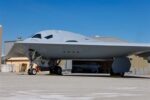The U.S. Naval Research Laboratory (NRL) has successfully completed thermal vacuum (TVAC) testing of its robotic servicing payload—a key milestone in the development of on-orbit satellite maintenance capabilities. This payload is slated to fly aboard the On-orbit Servicing, Assembly, and Manufacturing 2 (OSAM-2) mission, formerly known as DARPA’s Robotic Servicing of Geosynchronous Satellites (RSGS). With TVAC testing now complete, the system moves closer to launch readiness in 2024.
Thermal Vacuum Testing Validates Space Readiness
Thermal vacuum testing is a critical phase in qualifying spacecraft hardware for orbital deployment. The NRL’s robotic payload was subjected to extended cycles of extreme heat and cold in a high-vacuum environment simulating geostationary orbit conditions. This process ensures that all mechanical and electronic systems can withstand the harsh thermal gradients and vacuum pressures encountered in space.
According to NRL officials, the test campaign validated full functionality across all subsystems including power distribution units (PDUs), robotic arm articulation systems, avionics packages, and sensor suites. The payload includes a dexterous seven-degree-of-freedom robotic arm equipped with force-torque sensors and stereo vision cameras designed for precise manipulation tasks such as refueling or component replacement on aging satellites.
“Passing TVAC is a major technical hurdle,” said Brian Roberts, NRL’s program manager for satellite servicing. “It confirms that our system will operate reliably under real orbital conditions.”
From RSGS to OSAM-2: A Strategic Shift
The payload was originally developed under DARPA’s Robotic Servicing of Geosynchronous Satellites (RSGS) initiative launched in 2016. RSGS aimed to demonstrate autonomous or semi-autonomous servicing operations—such as inspection, repositioning, or repair—on existing satellites not originally designed for maintenance.
Following DARPA’s transition of the program to the U.S. Space Force and NASA’s growing interest in orbital manufacturing and logistics capabilities under its OSAM umbrella programs (OSAM-1 focusing on refueling; OSAM-2 on robotics), the mission was rebranded as OSAM-2. The NRL continues to lead development of the core robotic systems while Maxar Technologies serves as spacecraft integrator.
This evolution reflects a broader shift toward sustainable space operations—extending satellite lifespans through modular upgrades or repairs rather than full replacements—a concept increasingly vital given congested orbital regimes and rising launch costs.
Robotic Payload Capabilities and Architecture
The NRL-developed payload features a modular design optimized for geostationary orbit servicing tasks:
- Robotic Manipulator: A seven-jointed arm with end-effector tooling capable of grasping fixtures or deploying instruments. It integrates tactile feedback via force-torque sensors.
- Sensors: Stereo vision cameras provide depth perception; LIDAR may be included for proximity operations; inertial measurement units assist with pose estimation during docking maneuvers.
- Avionics & Autonomy: Real-time control software enables supervised autonomy—allowing ground operators to command high-level tasks while onboard systems manage fine motion control.
- Tool Changer Interface: Enables switching between tools such as wire cutters or fuel nozzles depending on mission profile.
This architecture supports multiple mission types: anomaly inspection via close-range imaging; mechanical adjustments like antenna repositioning; or even component swap-outs using pre-positioned spares or standardized interfaces such as NASA’s cooperative servicing aids (CSAs).
Toward Operational Satellite Servicing Infrastructure
If successful post-launch demonstrations validate its performance in orbit—currently targeted for late 2024—the NRL system could form the basis of an enduring U.S. government capability for geosynchronous satellite maintenance. This would complement commercial efforts by Northrop Grumman’s Mission Extension Vehicles (MEV) and Astroscale’s debris removal platforms.
The strategic implications are significant:
- Sustainability: Extending service life reduces need for costly replacements and mitigates orbital debris generation.
- Resilience: Damaged but otherwise functional assets could be repaired rather than abandoned—preserving critical ISR or comms capabilities during conflict scenarios.
- Tactical Flexibility: On-demand reconfiguration could allow satellites to adapt roles mid-mission via hardware swaps or sensor upgrades deployed robotically.
The Department of Defense has increasingly emphasized space resilience through initiatives like Tactically Responsive Space (TacRS) and Joint All-Domain Command & Control (JADC2). Robotic servicing aligns with these objectives by enabling adaptive support infrastructure beyond Earth orbit.
A Crowded Field: Global Competition in Orbital Robotics
The U.S. is not alone in pursuing these capabilities. China has demonstrated satellite capture using robotic arms aboard its Shijian series spacecraft; Russia has tested rendezvous maneuvers with Luch/Olymp-K platforms suspected of intelligence-gathering roles; Japan’s JAXA continues developing modular servicers under its Commercial Removal Demonstration project with Astroscale Japan Inc.
This competitive landscape underscores why maturing autonomous repair technologies is both a technical imperative and strategic necessity for Western militaries reliant on persistent space-based assets across communications, navigation (e.g., GPS), missile warning (e.g., SBIRS), and ISR domains.
Next Steps Toward Launch Readiness
The next major milestone will be integration with Maxar’s spacecraft bus followed by system-level environmental testing including vibration qualification and electromagnetic interference assessments. Once complete, the full stack will undergo final review before shipment to Cape Canaveral ahead of launch aboard a commercial rocket—likely SpaceX Falcon 9 or ULA Vulcan Centaur depending on manifest alignment.
If timelines hold steady through mid-2024 integration phases, orbital deployment could occur before year-end pending range availability from Space Systems Command at Cape Canaveral Space Force Station.
A New Era in Autonomous Orbital Logistics
The successful deployment of this robotic payload would mark a watershed moment—not just technologically but doctrinally—for how militaries approach sustainment operations beyond Earth orbit. As adversaries develop counter-space capabilities including kinetic interceptors and co-orbital stalkers, having resilient infrastructure capable of self-repair becomes not just desirable but essential to maintaining freedom of action in contested domains above Earth’s atmosphere.







